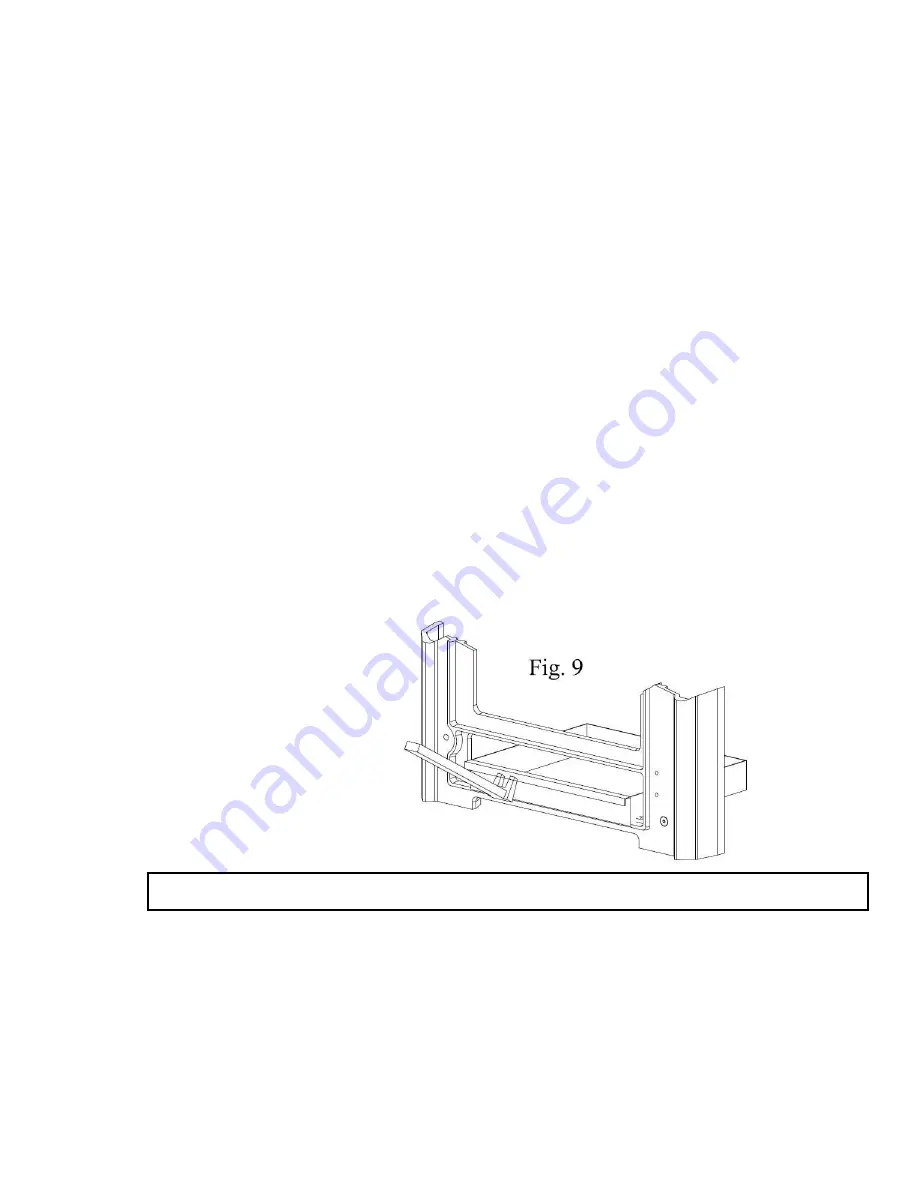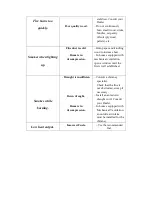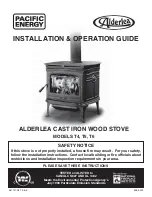
temperature, but settle as soot (unburned gases) in the chimney and stove.
Extreme conditions, such as poor draught in the chimney, large quantities
of wood or wet wood, may, in the worst-case scenario, cause an explosive
ignition.
When firing in the summer period, when there is minimal need for heat, the
combustion will be poor. The stove provides too much heat, so the
combustion should be reduced. But always remember to make sure that
there are lasting flames until the wood becomes charcoal. If you want a
weaker fire, stoke up using less wood.
If you fire the stove using wet wood, a lot of the fuel’s thermal energy will
be spent forcing the water out of the wood, without releasing any heat to
the stove. This incomplete combustion results in a layer of soot being left in
the stove, pipe and chimney.
3.2.3 Ash removal
Fig. 9(How to put out ashpan)
It is essential to keep the grate free from a heavy build up of ashes. This product is
equipped with a grate riddling device which is used to “shake” ashes off the grate into
the ash pan. Whenever the stove is burning without life when the lower control is
open, use the riddling lever to clear the grate of surplus ashes.
If burning solid fuel, always
empty the ash pan at least once
a day or whenever it is full of
ashes. Never allow the ashpan
to overfill allowing ash to be in
contact with the underside of
the grate. If this condition is
allowed, the grate will wear out
pre-maturely.
3.3 Maintenance
The regular maintenance by a competent engineer is recommended.
3.3.1 Cleaning Glass
This product is equipped with an air wash for the glass. Air is sucked in through the
air vent above the fireplace and down along the inside of the glass.
However, some soot will always stick to the glass, but the quantity will depend on the
local draught conditions and adjustment of the air wash vent. Most of the soot layer



































